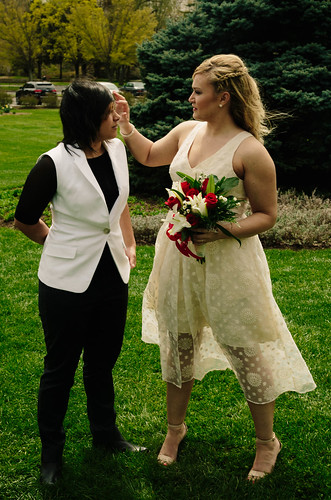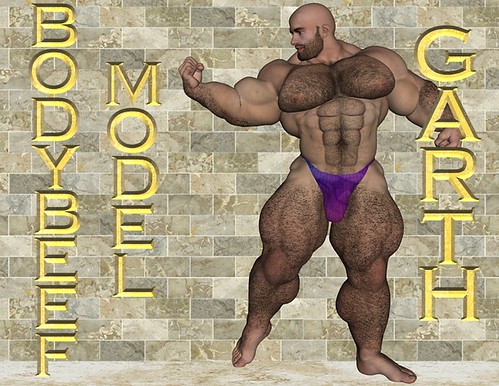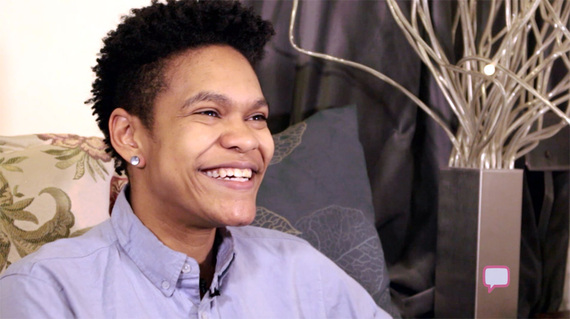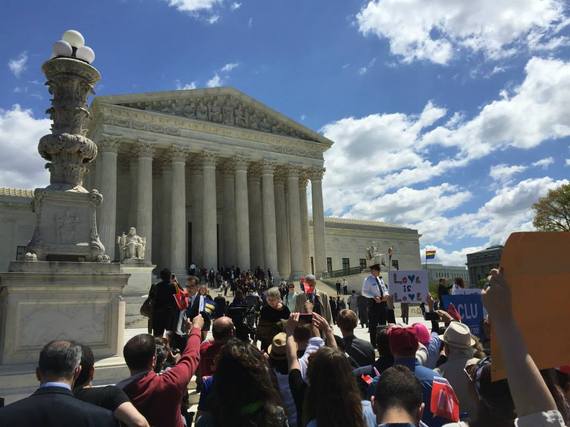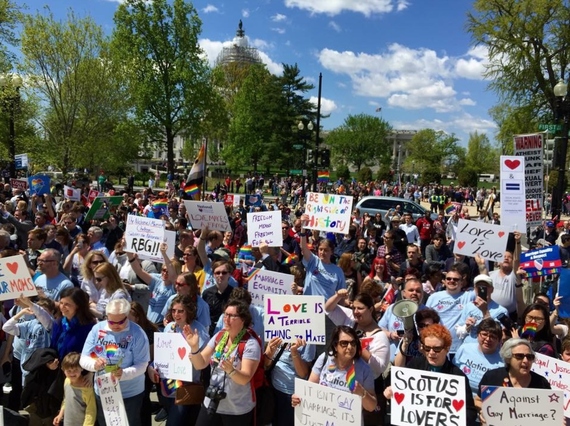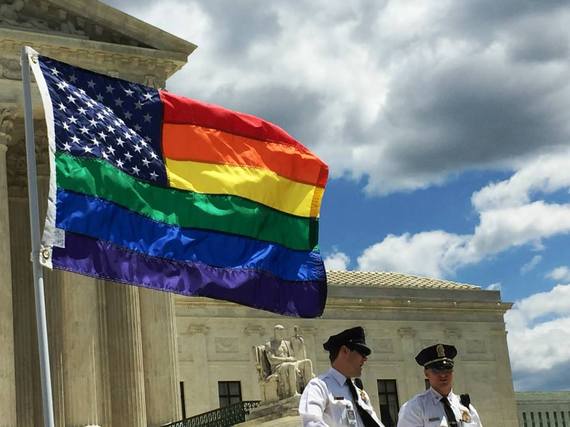Bianca Del Rio Dishes On The Weird World Of Fame, Her Drag Inspiration And An Upcoming Show With A Bunch Of “Old Whores”
 Roy Haylock, better known to drag fans the world over as Bianca Del Rio, knew early on that Bianca wasn’t like most of those other girls. She could lip sync if she had do (though she skated by in RuPaul‘s Drag Race season six without ever having to do so for her life), but her game was comedy, and the ability to get in a well-timed jab, not to mention an unbreakable zeal, earned her the Drag Race crown.
Roy Haylock, better known to drag fans the world over as Bianca Del Rio, knew early on that Bianca wasn’t like most of those other girls. She could lip sync if she had do (though she skated by in RuPaul‘s Drag Race season six without ever having to do so for her life), but her game was comedy, and the ability to get in a well-timed jab, not to mention an unbreakable zeal, earned her the Drag Race crown.
Since her win, Bianca has been doing what any successful drag queen with her wig on straight would — traveling the world and building an even bigger name for herself.
We caught up with Bianca to talk about her roots, what it’s like to be thrust into the fame game (it ain’t all roses), and her upcoming appearance at the Castro Theater on May 23rd in The Drag Queens of Comedy alongside Drag Race alums Willam and Alaska, as well as Michelle Visage and a bevy of gut-splitting queens. Or as Bianca ever-so-lovingly refers to them, “old whores.”
Queerty: Where do you hail from?
Bianca Del Rio: New Orleans, Louisiana.
And where do you call home?
New York City. I’ve been here for ten years — I think that’s the rule, you’re officially a New Yorker after ten years.
Are you and New Orleans still on good terms?
New York is my home, New Orleans is my love. I had a good thirty years in New Orleans, and it’s great to go back.
New Orleans is such a great city for weirdos, in a good way. Did it have that effect on you?
Well I got my start in theater doing costumes and makeup, so it kind of evolved into becoming a drag queen. So with each step, it was kind of like “Oh, wow!”

Charles Pierce
Was there a specific moment it clicked for you?
Well I remember vividly a friend of mine — I was kind of already “being myself” backstage, making jokes and stuff and being a little oddball — and this older queen gave me a VHS copy of Charles Pierce, who is this genius drag queen from many, many years ago. He was best friends with Bea Arthur and he was a shit riot. And I remember watching this video and cackling and going “Oh my God, this is what I want to do.”
I still have the VHS tape, just in case it makes a comeback.
How old were you then?
At least 17 or 18, and I didn’t start actually doing drag until I was 20, but it’s when I realized “You can make a living doing this? And wear sequins? And be mean to people?!”
Fast forward. What have you been up to lately?
We were just in Paris and Denmark, London, Amsterdam. It’s insane.
Any favorites overseas?
My favorites so far have been Amsterdam, Paris and Australia. Of course the fancy gay ones. They were pretty amazing. The people and the culture — it’s nuts. It’s still pretty hard for me to wrap my head around. It’s the power of television.
So Drag Race is just as popular over there?
It’s insane, yes. And they download it all illegally, which is even crazier. They’re super diehard fans. It’s nuts.
Do you get recognized out of drag when you’re sightseeing?
It’s never happened until recently, thanks to Drag Race, of course. Eighty percent of the show you’re out of drag. So yeah, it does happen and they will stalk you and meet you outside your hotel and then will chase you down the street.
So you’re the fifth drag Beatle.
Well, let’s not go that far, but it is pretty crazy.
 What’s the weirdest gift you’ve ever received from a fan?
What’s the weirdest gift you’ve ever received from a fan?
I’ve received bologna a lot which is quite weird, because in my snatch game episode I said bologna as Judge Judy. And it’s kind of awkward because people will bring Courtney Act flowers and love notes and I get…bologna.
Do you eat it?
I don’t even eat meat, so it’s even weirder. There was also a woman who was a nurse who sent me a care package, which included a catheter. What am I going to do with that?
With no explanation why?
Well, everything had a little post-it note explaining why everything would help me maintain my health while I was traveling. There was a vaporizer for my voice, and some compression socks. But it was just an odd gift — I’m not into kinky shit like that.
What did you do with it?
Well, after I took photos of it because no one would believe me, I threw it in the trash.
What’s it like to do shows now where everyone knows who you are?
Now it’s so much better to have a smart audience who’s sitting down and actually hear what you want to say as opposed to drunk queens in a bar, and I didn’t really expect it on this level. It’s been surreal.
Ketamine isn’t the best conduit for a captive audience.
Yeah, and it’s hard when you’re traveling sometimes I go “Are they laughing because I was on television or are they laughing because it was funny?” We live in this world now where thanks to instant fame everybody’s all in your face, but you have to question “Is the content really good?”
And you’ll be performing some new material soon at the Castro Theater in San Francisco?
Yes I am! Sasha Soprano is producing a comedy special and it’s a bunch of us which is really a fun night — I did it last year and it was great. Me, Willam, Jackie Beat, it’s great. If you hate one of us, you’ll like the other ones. It’ll be new material, cause when you have a lineup with all those old whores, that’s the easiest material to do. The geriatric cocoon tour.
 What else are you working on? Any updated on your film project, Hurricane Bianca?
What else are you working on? Any updated on your film project, Hurricane Bianca?
Yes! At the end of July we finally get to film, and that’ll be in New York and New Orleans.
OK, now for some important stuff. Gold or silver?
I would go gold.
Good choice, classic. Amy or Adele?
Ooh, I like them both, but I’m excited to hear what Adele is coming out with. I mean Amy’s dead now. That’s the nice thing about Adele.
Very true. Spandex or leather?
Oh, neither one look good on a drag queen. Spandex hugs all the wrong areas, but leather might resembles our faces, so I guess would have to say spandex.
Drink during a show or after?
During, of course! If I’m doing a solo show I’ll have wine, because when you have to do an hour and a half, you’ve got to keep your wits about you. A chardonnay — something fancy and housewife-y. And then if I’m doing a bar gig, I definitely go for a vodka and grapefruit juice, which is my fat girl drink.
Perfect score, four out of four. Thanks for chatting!
Thank you!
Dan Tracer

